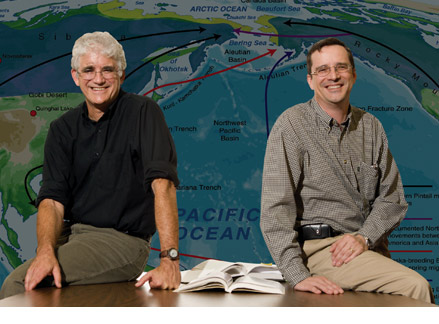


Averting the Next Pandemic
by Sam Fahmy
Intro
|
What's a Danger, And What's Not
|
Staying Ahead Of The Threat
|
Taking A Broad Perspective

![]()
What's A Danger, And What's Not
While the average person may think of avian influenza as a single virus—and a scary one at that—the truth is that the term refers to a spectrum of viruses distinguished by certain proteins on their surfaces. The “H” refers to hemagglutinin and the “N” to neuraminidase, both of which are major contributors to the virus’ ability to spread in the body. There are 16 H subtypes and 9 N subtypes, with various combinations possible. Some examples include H1N1, H1N2, H3N2 and, of course, the feared H5N1. When an avian influenza virus causes only mild symptoms in chickens, it is referred to as a low-pathogenicity strain. If it’s capable of causing hemorrhaging and death, the strain of the virus is clearly high-pathogenicity—or “high-path.”
Only viruses of the H5 and H7 subtypes have been high path—the devastating Pennsylvania outbreak that initiated Stallknecht was caused by the H5N2 subtype—though H5 and H7 viruses aren’t necessarily high path. Most produce relatively mild symptoms, such as lethargy or ruffled feathers, in birds.

David Stallknecht (Left), of the Southeastern Cooperative Wildlife Disease Study and David Swayne (Right) of the Southeast Poultry Research Laboratory.
Still, high-path Asian H5N1 is the virus that most media reports focus on, and with good reason. In 1997, it began infecting humans in Hong Kong. Eighteen people were hospitalized with severe infections, and six of them died. Hong Kong’s entire poultry population of 1.5 million birds was culled in three days, a move that many believe averted a human catastrophe.
In 2003, the virus again began causing outbreaks in poultry in Asia. This time, it went undetected and unreported, possibly for months. In December 2003, the virus was confirmed in South Korea. In early 2004, it was confirmed in Vietnam, Thailand, Cambodia, China and Japan. The first human cases of this wave occurred in Vietnam, and by 2006 the virus had killed more than 150 people in 10 countries.
Epidemiologic investigations by agencies such as the World Health Organization and the CDC revealed that the deaths were mostly limited to people who had had close contact with poultry—nothing to ignore, but not a global threat, as most people do not have such contact. The concern, however, is that the virus might mutate into a form that is easily transmissible from person to person, potentially triggering something on the scale of the 1918 flu pandemic, which killed an estimated 20 to 40 million people worldwide.
The virus has already demonstrated, however, one other troubling characteristic. Avian influenza viruses typically originate in wild birds and then begin infecting poultry, but this strain has shown the ability to move back into wild birds. This phenomenon potentially provides a way for migratory birds to spread the virus across continents.
Intro
|
What's a Danger, And What's Not
|
Staying Ahead Of The Threat
|
Taking A Broad Perspective
For comments or for information please e-mail: rcomm@uga.edu
To contact the webmaster please email: ovprweb@uga.edu
![]()